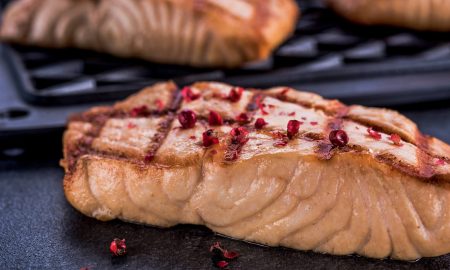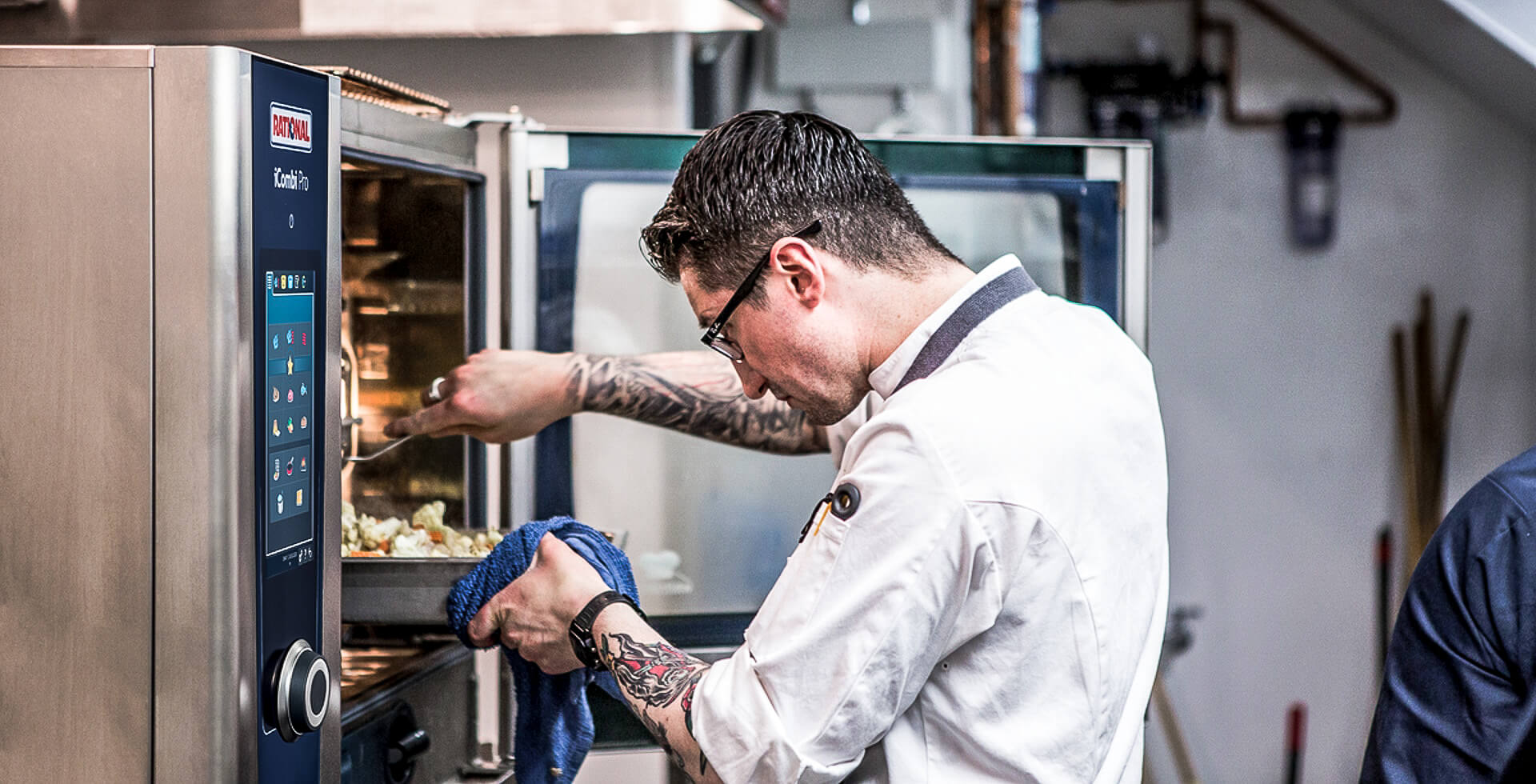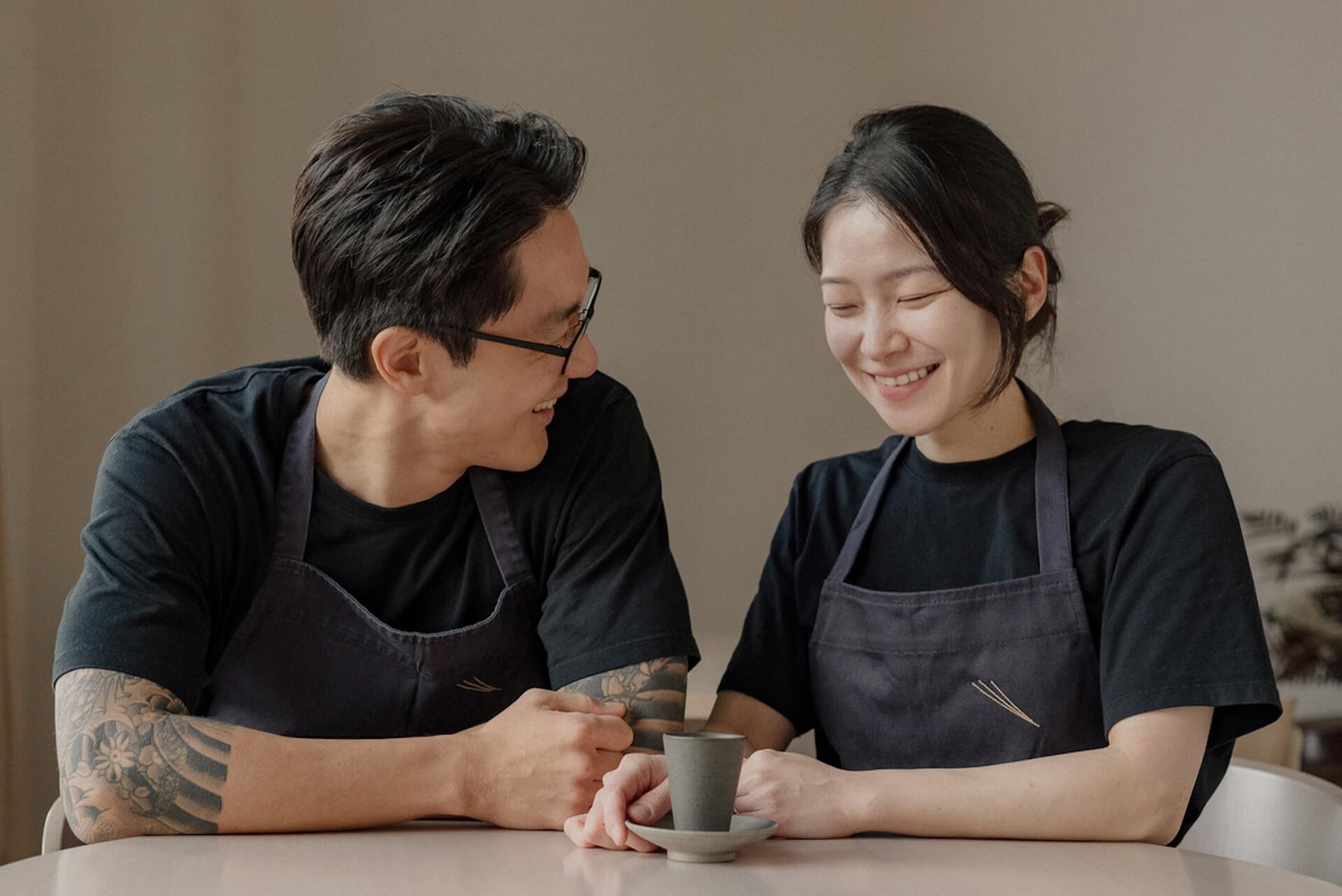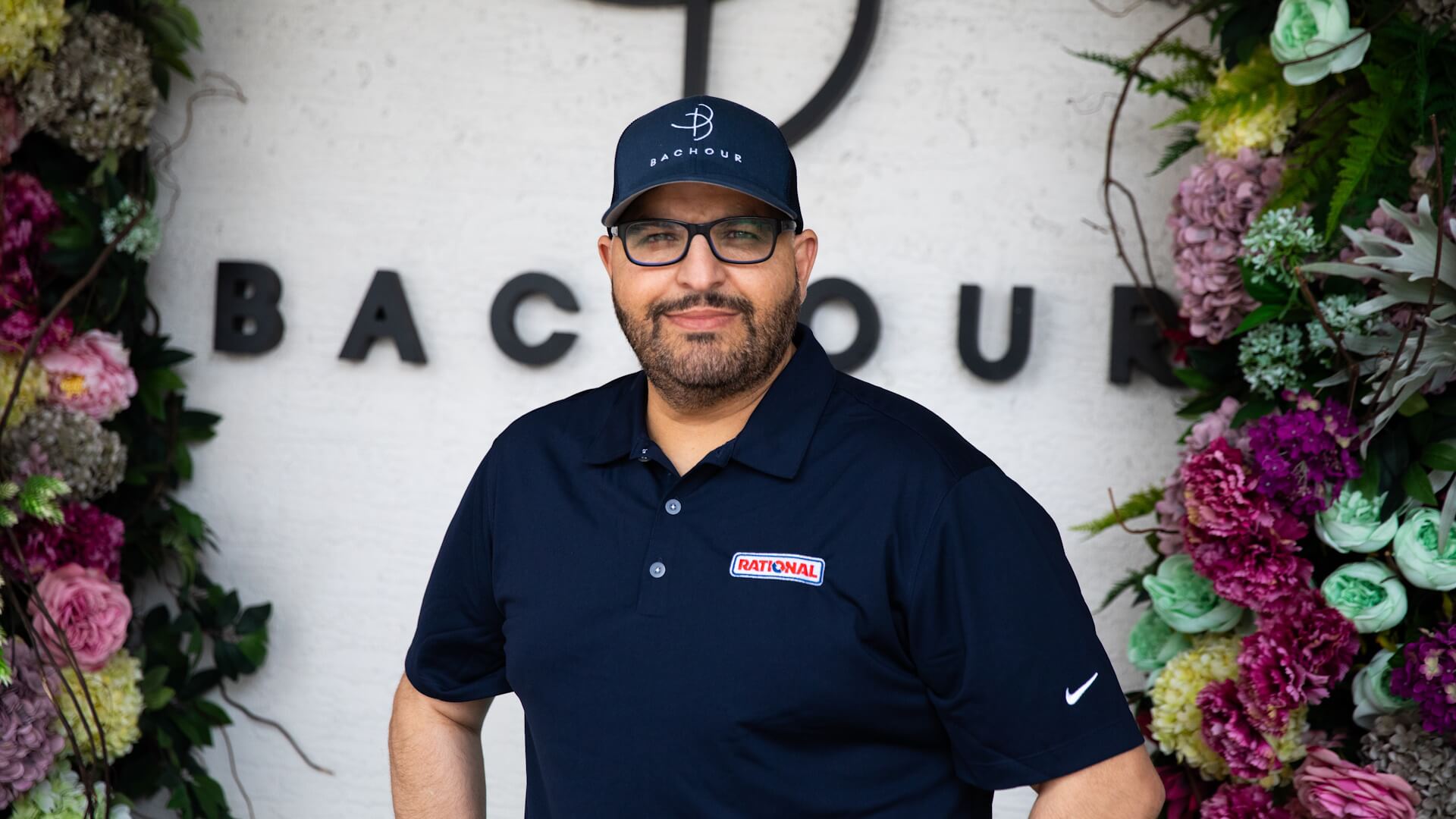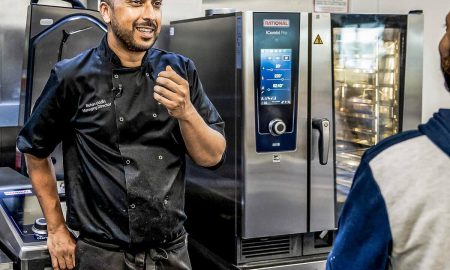“Brutal,” says David Muñoz. Somewhat mischievously. But only somewhat. He is serious about this choice of word, which is intended to sum up his cuisine. Very serious indeed. Why? Muñoz – mohawk haircut, pierced ears, colorful muscle shirt – considers briefly. “I can’t explain that in a short sentence,” he says. And he’s right. His answer is not only detailed, but also long. And it certainly makes sense. However, there’s definitely a downside. To really understand the response, you need to know who David Muñoz is. How it all began. And how he came to cook the way he cooks.
Sieh dir diesen Beitrag auf Instagram an
David Muñoz: Chef of the world
Let’s travel back to Madrid in the early 1990s. In contrast to the present day, it was relatively quiet in the world of gastronomy back then. This is astonishing, considering that the “Spanish kitchen miracle” was already in full swing. Ferran Adrià had won the second star in 1990 with his groundbreaking molecular cuisine in the legendary El Bulli, and there was a spirit of gastronomic optimism throughout the country.
All of this left a lasting impression on 14-year-old David. Although his parents had nothing to do with gastronomy, he had a real passion for cooking. And he had a really formative experience in Abraham Garcia’s restaurant Viridiana in Madrid, where his parents often took him: A chef in his own restaurant who turns his own visions and style into reality. I knew that that’s exactly what I wanted to do one day.”
Muñoz completed compulsory schooling and enrolled in the hotel management school in nearby Torrejón de Ardoz.
He learned there during the day – and then worked in a wide range of restaurants in Madrid until late at night. The hotel management school taught him classic French techniques, while at night he learned the basics of Spanish home cooking. But that’s all.
Sieh dir diesen Beitrag auf Instagram an
So it’s no wonder that this teenager with a real thirst for knowledge wanted more. So he went to the most vibrant scene in the world of gastronomy in the early 2000s: London. In Hakkasan, which had just made contemporary Cantonese cuisine world famous, as well as the successful Japanese concept Nobu, Muñoz learned about the diversity of non-European flavors. But also that every cuisine, whether Cantonese, Japanese, French or Spanish, ultimately follows strict rules. And his goal was to break these rules. “For me, cooking is about being free and doing what you like,” says Muñoz. And since nobody shared this vision back in the mid-2000s, he simply opened his own restaurant. In Madrid, of course.
DiverXO restaurant: The Madrid sensation
Of course, there was more to it than that. “My friends said it won’t work out,” says Muñoz. Madrid is the wrong city for a restaurant like the one he envisioned. A restaurant where food is creative, performative, transnational, playful through and through. That’s not Spanish, Asian, French, Indian or anything else. But still pays homage to kitchen traditions all over the world in terms of taste. In retrospect, we know that Muñoz’s friends were mistaken. Very much so.

Image: David Muñoz
Less than three years after opening in 2010, the DiverXO received its first star. This was followed by the second two years later, and again two years later by the third. Madrid, which until then had been such a dull city that was considered a fine-dining desert compared to San Sebastian or Barcelona, had suddenly become a destination for fine-dining. And thanks to a cuisine that, back then and to this day, defies any attempt to put a label on it.
Three stars for an almost anarchic and somehow nameless cuisine? This was a rather unusual situation for the Michelin Guide at the time. The testers apparently had to eat at DiverXO ten times because they could not believe that such a chaotic cuisine could actually be at three-star level. But it still has these stars to this today. And now more than ever, you get the impression that Muñoz’s cuisine has just been rediscovered. Why is this?
Anti-fusion chef David Muñoz
Let’s try to explain. On the one hand, there’s the focus on creating a restaurant that offers a complete experience. When you walk in to DiverXO, you are transported into a different, very different world. In the almost disturbingly white space in Star Trek look, sculptures of flying piglets frolic around, which are not just perfect for posting on Instagram today, but also illustrate Muñoz’s basic philosophy that anything is possible. At a time when every restaurant is eager to score points with a strictly defined kitchen line, this entrance has suddenly regained appeal for many. The strictly regional chefs of Scandinavia seem to be something of an antithesis to this extravagant, freedom-loving cuisine. Perhaps it’s curiosity that has brought many of these Nordic grandmasters to DiverXO recently?

Image: David Muñoz
In any case, Muñoz’s dishes have nothing to do with regional radius orthodoxy or reduced purism. No matter which of the 25 courses from the “Flying Pigs” menu is served: Even well-traveled foodies will never have seen such a colorful mix of techniques, serving methods and crockery types. The dish consisting of grilled pork skin with black sesame brioche has now become a classic. The same goes for the suckling pig with carrot dim sum or the oxtail soup.
But Muñoz’s comfort zone is the disruptive, surprising, and for some guests simply overwhelming: It’s completely possible to find a deep-fried prawn hanging from the ceiling on a nylon thread, for example. “Butter Chicken Masala” made from frog legs, pickled mint, deep-fried flatbread made from lentils and sweet and sour chutney. Guests could be asked to stand up and have a spoon inserted into their mouth by a waiter wearing a black uniform. A delicious, delicately cooked baby squid may be hiding in a dessert. Or the shell of a king prawn may even be served as a single dish, which is intended for drinking rather than eating.
Sieh dir diesen Beitrag auf Instagram an
As versatile and global as Muñoz’s culinary art may seem, the celebrity chef really objects to the term fusion. He also explains why: “Fusion cuisine combines Thai flavors with Spanish products, for example. That can be great if it’s done well, no question. But we don’t do that here. I try to develop new ideas from traditional cuisine and give them a completely different signature. It’s completely different from fusion.” So is brutal a more accurate description? Is this really the word that best describes David Muñoz’s cuisine? No. Is there another word that would do justice to his culinary approach? No. But that doesn’t matter: Muñoz’s cuisine doesn’t need a label. This cuisine speaks its own language – the language of uncompromising freedom.



